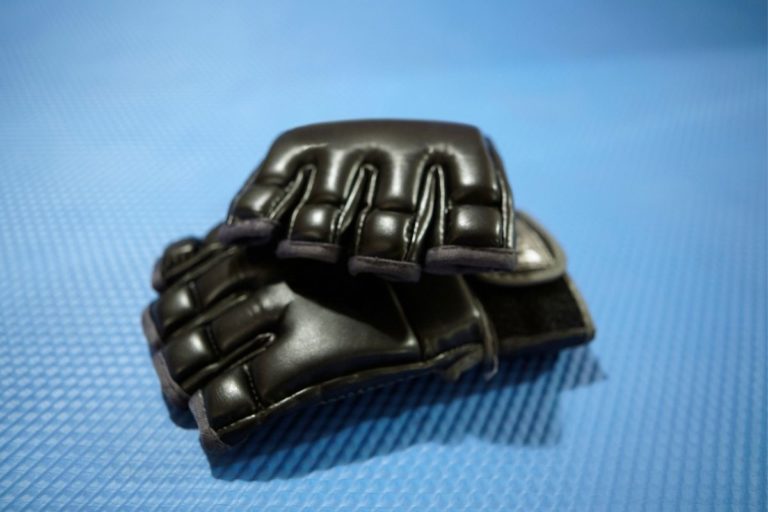How Dangerous Is MMA?
MMA is one of the most popular combat sports that enjoys a massive following all around the world. But on the other side, it also has a bad reputation for being one of the most dangerous as well. But where is the truth? How dangerous is MMA actually?
According to studies, MMA has a higher injury rate when it comes to all groups of injuries than other combat sports (28.7 injuries per 100 participations). But on the flip side, training in MMA and even competing as an amateur is not that dangerous. In fact, it might be even safer than in most other martial arts.
Keep reading this article to learn more about the sport of MMA and the dangers it poses to people’s health.
How dangerous is MMA (competition)?
MMA is the most versatile combat sport where fighters suffer injuries in just about every match. Between 2016 and 2018, ringside physicians at UFC events recorded a staggering 291 injuries in 285 fights. Things get even worse when you see that most of these were actually head injuries:
Head injuries (67%)
- Concussions
- Broken nose, jaw, orbital bone
- Deep cuts
Upper Limb injuries (40% female; 14% men)
- Wrist and hand fractures
- Joint dislocation
- Sprained/strained muscles/ligaments
- Shoulder dislocation
- Rotator cuff tear
Lower limb injuries (19% men; 5% female)
- Torn ACL/PCL/Meniscus
- Torn/sprained/strained ligaments and muscles
- Leg and foot fractures
- Ankle sprains
So if you want to be a fighter, you have to accept the fact that cage fighting is a sport that carries a high risk of mild to serious injuries. In some cases, you might go through a fight with a muscle sprain and recover within days. But on the other, you might suffer a concussion or fracture, and be on the sidelines for months. But why MMA is so dangerous?
To understand this, you have to look at MMA as a concept. It is a full-contact sport where athletes strike using all limbs as weapons while wearing small 4OZ gloves. They are also allowed to fight in the clinch, wrestle, strike on the ground, and attack with chokes and bone-crushing joint locks. Or in other words, it includes far more weapons and ways you can hurt the opponent than most other sports.
On top of that, the rules do not offer much protection either. The emphasis is on aggression, power, speed, knockouts, and causing as much damage as possible. Once the cage doors close, the fighters’ main objective is to hurt the person standing in front as much as possible. Though this may sound brutal, it’s what fighting is all about.
Is training MMA dangerous?
MMA is actually very safe to train in, no more dangerous than other martial arts, or even sports like football for example. But you have to accept the fact that training in full contact sports like MMA, carries a certain risk of injuries. You can’t expect to trade strikes or roll on the ground all the time and not get hurt. Whether that’s going to result in a couple of bruises or a fracture truly depends on various factors, including luck.
People who train in MMA for various fitness and self-defense benefits are not at huge risk. Each gym includes an amateur group where the methods of training are much safer and adapted to the needs of average people.
First, each student must have and wear full safety gear whenever they are doing anything that might lead to injuries such as sparring. No matter if it’s just a light live drill session between beginners or sparring between senior students, all students need to wear the following protective gear:
- Boxing gloves or MMA training gloves (8oz, 10oz, 12oz, 14oz)
- Hand wraps to add additional support to the wrist and knuckles
- Shin pads to protect the legs from leg injuries
- Headguard
- Mouthguard
- Groin cup (optional but worth wearing)
In training, you will never see students sparring too hard or blasting each other with hard shots. No, the entire emphasis is on learning, keeping it all light and technical, and utilizing no more than 50% of force. Students must be careful not to do anything crazy which might increase the risk of injuries. This combined with the protective gear significantly minimizes the risk of injuries and makes MMA training safe.
What are the potential injuries in MMA training?
Like in any other sport, injuries in MMA range from minor to severe. Whether you are going to get hurt is based on many factors like the gym you train in, do you wear protective gear, how hard/often are you sparring, and many more. Here is a list of potential injuries that you may suffer in training that are not to be taken lightly.
Bruises and sprains — are not severe injuries and you will have those all the time. Of course, bruises can also be a hidden sign of a more serious injury, like bone fracture, for instance, so be sure to be careful and get medical attention if you feel something is wrong. Sprains, on the other side, take a couple of days of rest to heal on average, and you shouldn’t worry too much about those.
Fractures — are common in all martial arts that include full contact striking. Due to improper technique, or just bad timing, fighters may break their leg/foot while kicking, wrist while punching, or ribs upon receiving a hard blow. Broken noses are also quite common.
Muscle injuries — are quite common simply because MMA training pushes your body and muscles over the limits all the time. The risk of suffering a torn ACL or other muscle injury is not much higher than in other sports though. But the lack of rest, nutrients, and overtraining may easily result in a muscle injury.
Concussions — most of the time, concussions happen when a student absorbs a hard blow to the head. But concussions can also happen as a result of cumulative damage due to repeated hits to the head.
Is MMA more dangerous than Boxing?
Studies have shown that MMA carries a higher risk of injuries than boxing. However, this doesn’t mean that cage fighting is more dangerous, in fact, it might be the total opposite. To better understand this, you have to take a close look at the numbers.
When it comes to stats, 28.7 injuries per 100 participations occur in MMA fighting in total, both minor and severe. Boxing has 17.1 injuries per 100 participations, or 3.4 per round, which is much less. BUT, this does not mean that boxing is safer, and here is why.
If you look at the other study, you can see that the risk of head and neck injuries is 84% in boxing. Boxers use only their hands as weapons to strike above the waist with the main target being the head. In fact, boxers throw up to 100 punches per round or 780 per fight on average. If you combine this with the average accuracy of between 35 and 45%, you get why boxing is such a dangerous sport. The risk of suffering a concussion, CTE, or other brain injuries is simply too high.
MMA is far more versatile and there are less head strikes because fighters spend a lot of time wrestling, and fighting on the ground. They also throw a lot of punches and kicks to the body and legs which results in MMA having far less head and neck injuries, around 64%.
Yes, the risk of suffering an injury is higher in MMA. But the risk of developing serious, long-term injuries like brain damage is much, much higher in boxing.
Is MMA more dangerous than Muay Thai?
Studies show that the risk of injuries is higher in MMA than in Muay Thai. Still, which one is more dangerous is hard to tell. In fact, Muay Thai visually looks far more brutal than cage fighting in terms of damage and injuries, to be honest.
A study performed on 195 Muay Thai athletes, out of which 49.2% were pro athletes while 50.8% were amateurs, showed that the overall injury rate was 55 injuries per 100 fight exposures. This is much, much higher than in MMA where that number is 28.7 injuries per 100 fights.
But be sure to take these numbers with reserve as advanced studies on the dangers of Muay Thai are yet to be performed. For instance, another study shows different numbers, 13.1 injuries per 1000 exposures.
The truth is somewhere in between and there is a strong argument that Thai boxing could be more dangerous than MMA since it is a lot more brutal. There are far more punches to the head, and vicious kicks to both upper and lower body segments, including the head. For example, skilled boxers are capable of generating a force similar to hitting a person with a baseball bat in a single kick. Not to mention brutal elbow and knee strikes inside the clinch that cause various types of brutal injuries.
As a result, injuries like concussions, broken bones, and deep cuts are quite common both in training and competition. Saying that MMA is more dangerous on paper is correct, but you wouldn’t be wrong if you see it the other way around.
How to prevent injuries in MMA
Yes, MMA is a dangerous sport but there are a lot of things that you can do to minimize the risk of injuries. Here is a list of tips on how to stay safe in training:
- Improve strength — is one of the most important things because being physically strong keeps your body healthy. It allows your body to better sustain all the punishment in training, and recover faster.
- Hydration and diet — each athlete who is serious about their career or progress in the gym pays extra attention to the daily water intake and food they eat. Eating food rich in protein, vitamins, and minerals is essential and along with proper hydration, helps your body recover faster and prevents injuries.
- Always wear protective gear — a lot of people, for whatever reason, like to act tough in a gym by not wearing protective gear. This is just stupid because it only increases the risk of injuries. Wearing gear is the single most important factor when it comes to preventing injuries in training.
- Listen to your body and do not overtrain — MMA is a grueling sport where students constantly switch between striking and grappling classes. You have to train boxing, wrestling, and BJJ at the same time, and it is so easy to overtrain and get hurt. Be sure to always listen to your body, give it enough rest, and rather than training super hard, train smart instead. If you feel weak or bad before the workout, be wise and get a day off or have a light workout.






